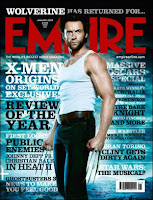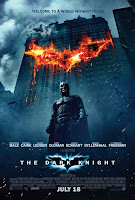


Stephen Dunn A2 Media Studies Coursework






In the opening sequence Siodmak ensures that the lights from the windows illuminate only part of the killer’s faces. I found the technique to be particularly effective in creating a sense of mystery and dehumanising the characters.

French critic Nino Frank first coined the term in 1946, as the visuals were very dark and influenced by German expressionism. This was because the Nazi regime had caused German filmmakers to emigrate to the production studios in Hollywood, USA. They would have had links to the expressionist movement and it was evident in their films.

The stylish crime-thriller storyline is prevalent throughout the noir period, this was due to a lack of writers during World War Two and so the same plots were being regurgitated to save money. I also discovered from my research that police detectives and private eyes formed the vast majority of film noir’s main protagonists. These ‘drifters’ (Naremore 2008) were seduced into a world of sin by the deceptive ‘femme fatales’ who hired them. I made sure that I included these character stereotypes into my script.
Having researched what elements comprise film noir, I then needed to brainstorm potential plot lines and produce a storyboard of the one I had opted to use. I had to ensure that the film was a plausible idea with the resources I had available to me. For instance, filming a high-speed car chase or gunfight would not be possible for me to produce on an extremely limited budget. My film follows the story of a private detective called ‘Max Wilde’. He is hired by the ‘Kane’ family to investigate their son’s mysterious death by first interrogating his wife ‘Loretta’. ‘Max Wilde’ and ‘Loretta Kane’ are names typical from 1950s America. I integrated ‘hard-boiled’ speech such as ‘good-looking doll’ into the script, having been inspired by the dialogue used in noirs that I had previously seen.
In addition to this, a superior level of acting was required. I decided to use two friends with previous experience as drama students. Both were dressed in full costume to add realism; the male in a suit – typical of a 1950s gentlemen and the female wearing a vintage dress bought from a charity shop and decorated in jewellery to suggest wealth.
 Naremore (2008) suggests that noir sets usually consist of ‘urban diners, shabby offices or swank nightclub’, but as all three of these locations would have required some sort of cost being involved, I needed to find access to somewhere that was freely available to me. Fortunately, I was given permission to use a friend’s home which provided an excellent set due to its oak walls giving a vintage feel that was in line with the authenticity of my 1950s period film. Modern cars would have potentially ruined the authenticity that I strived so hard to maintain and so I moved my own and the house owner’s cars out of shot to overcome this problem.
Naremore (2008) suggests that noir sets usually consist of ‘urban diners, shabby offices or swank nightclub’, but as all three of these locations would have required some sort of cost being involved, I needed to find access to somewhere that was freely available to me. Fortunately, I was given permission to use a friend’s home which provided an excellent set due to its oak walls giving a vintage feel that was in line with the authenticity of my 1950s period film. Modern cars would have potentially ruined the authenticity that I strived so hard to maintain and so I moved my own and the house owner’s cars out of shot to overcome this problem.
Filmmakers have access to industry standard equipment when they produce their work. Unfortunately, I did not have this privilege when producing my film clip so I had to use my initiative in some cases to compromise. For instance, for lighting I used a portable light from my bedroom which had a flexible stand. When I turned off all other sources of light in the house I could point it up into my actor’s faces and it would cast shadows onto the walls behind them. This as I stated earlier is one of the conventional forms of noir filmmaking that I was trying to convey. It was not possible for me to use a professional soundtrack as I did not have access to a studio, but the use of silence and diegetic sounds was still effective in creating a tense atmosphere and tone.
“The Double Crossing Dame”
By
Stephen Dunn
-Private eye hired by Mr Kane’s family to investigate his death.
Mrs Loretta Kane
-The late Mr Kane’s young grieving widow.
EXT. MR KANE’S HOUSE. NIGHT.
Max approaches the Kane household and walks round to the window to peer in as the light inside is on. He then knocks on the door. The front door opens.
INT. MR KANE’S HOUSE. NIGHT.
Max
I’m sorry to be calling at this hour Mrs Kane. My name is Max Wilde; I’m a private detective. May I speak with you?
Mrs Kane descends halfway down the stairs.
Mrs Kane
Of course Mr Wilde. Please, do come in. What brings you here?
Max
I’ve been hired to investigate your husband’s death Mrs Kane. I have a few questions I’d like to ask you.
Mrs Kane
I’m still grieving the loss of my poor, poor Bobby. But if this will help find his killer then I am more than happy to be of assistance.
Max
I see. You’re a young, pretty looking doll Mrs Kane. I’m told Mr Kane was a well-respected gentleman. Were you attracted to his wealth?
Mrs Kane
What are you implying Mr Wilde?
Max
I’m not implying anything. Was it not a factor in your relationship to him?
Mrs Kane
No. I loved Bobby.
Max
I think you did it, I think you killed Bobby!
Mrs Kane
NO!










I believe that I was successful in producing a short example of film noir. I achieved this by effectively researching noir camerawork, lighting, sound, script, set and costume. I managed to incorporate all of these elements into my short video clip and I accomplished this at a high level of professionalism, as my film did not appear amateur when aired to an expert audience who are familiar with filmic concepts.
Director's Commentary






